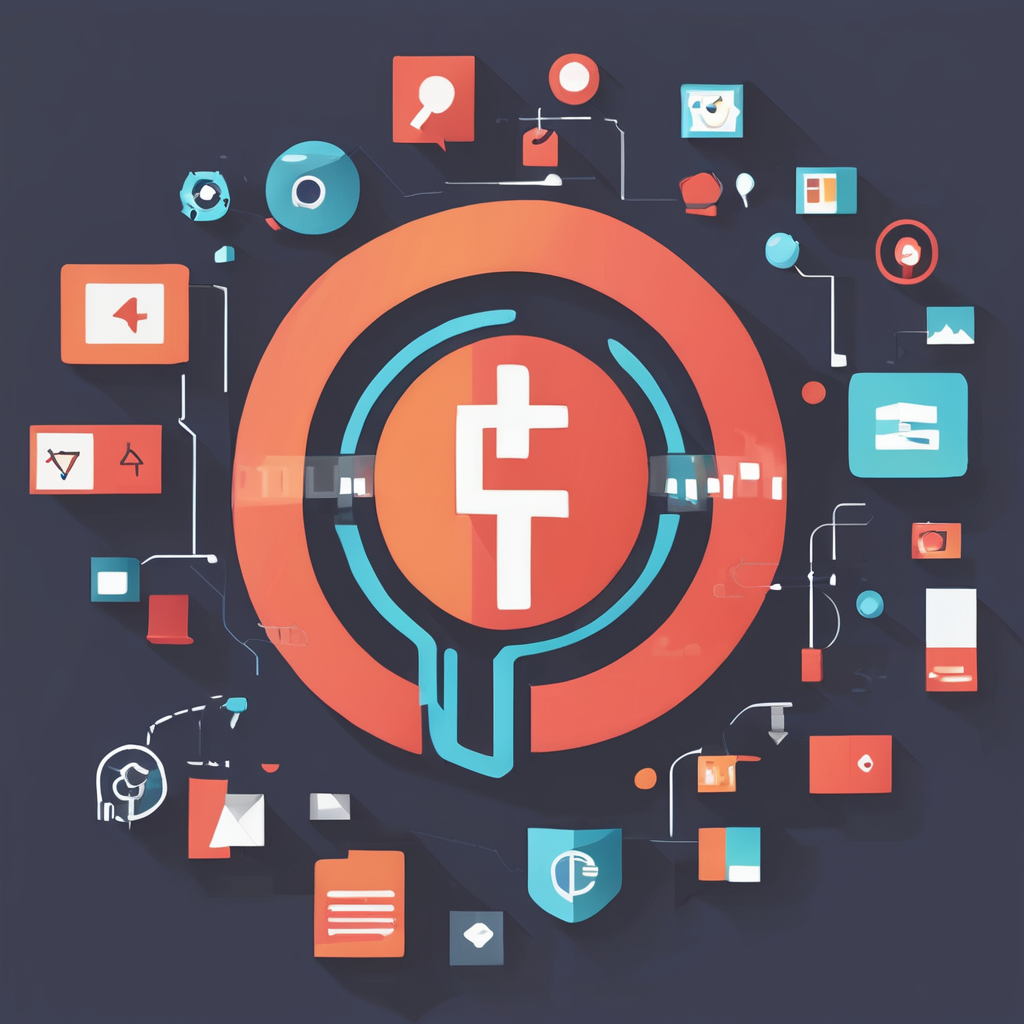Understanding Distributed AI Model Training
Distributed AI training is essential in today’s digital world, transforming how we optimize and scale complex AI models. Embracing parallel processing, this approach harnesses multiple compute resources simultaneously, significantly reducing the time needed for training sizeable datasets.
One of the primary benefits of distributed training is its ability to leverage cloud computing. By utilizing cloud platforms, organizations can access scalable resources that dynamically adjust to workload demands, ensuring flexibility and efficiency. This is particularly advantageous for startups or businesses without extensive infrastructure, allowing them to compete on a large scale without investing heavily in physical hardware.
Also read : Essential Factors to Consider for Building a Scalable and Secure Data Lake
Distributed AI training also involves a networked architecture, typically consisting of several key components: data distribution, model replicas, and synchronized updates. Data is partitioned and distributed across multiple nodes, where each segment is processed in parallel. Model replicas are created so that each node can independently update its portion of the data. Synchronized updates ensure that all nodes are aligned, maintaining the model’s accuracy and consistency.
In summary, distributed AI training is a powerhouse technique for model optimization, enabling rapid processing and broader accessibility while addressing the intricate requirements of distributed AI training.
Also to see : Key Factors to Consider When Integrating AI into Autonomous Drone Navigation Systems
Strategies for Efficient Resource Allocation
Effective resource optimization is crucial in today’s computational landscape. When allocating computational resources, techniques such as virtualization and containerization help maximize the utility of hardware and software. These strategies allow for multiple instances to run on a single physical server, enhancing resource use without compromising performance.
Balancing workloads across nodes is another critical strategy. By distributing tasks evenly, bottlenecks are reduced, and system performance is significantly boosted. Load-balancers play a pivotal role here by directing incoming traffic to less burdened nodes, thus preventing any single node from becoming a performance choke point.
In terms of cost-effective resource management, adopting a pay-as-you-go model can be beneficial. This approach ensures that costs align with actual usage, eliminating unnecessary expenses. Furthermore, auto-scaling mechanisms, which adjust resources based on real-time demand, can lead to efficient spending and optimal performance.
By employing these strategies, organisations can ensure that their computational infrastructure operates at peak efficiency, handling workloads smoothly while maintaining cost-effectiveness. These practices not only improve performance but also provide a predictable, manageable environment for resource allocation, ultimately leading to better overall outcomes.
Reducing Latency in AI Model Training
Achieving latency reduction is pivotal in AI model training, as it enhances both speed and efficiency. To minimise latency, reducing communication overhead is crucial. During training, excessive data transfer can slow down processes. Techniques such as data parallelism and model parallelism split tasks effectively across nodes. They diminish communication needs, thereby boosting speed optimization efforts.
Emphasising data locality can also significantly impact training speed. By ensuring that data and computation are physically close, the need for data transfer is reduced. This not only speeds up training but also lessens system strain, further contributing to performance enhancement.
To tackle latency issues, leveraging tools for profiling and optimization in distributed systems can be invaluable. Tools like TensorBoard and NVIDIA Nsight offer insights into system bottlenecks. They provide actionable data on where latency occurs, enabling developers to make informed decisions on optimisation strategies.
Incorporating these methods can transform AI training from a sluggish process to one marked by efficiency and speed. By focusing on communication overhead, data locality, and efficient use of profiling tools, latency becomes a manageable obstacle rather than a derailing factor in the pursuit of advanced AI capabilities.
Case Studies on Distributed AI Training Success
In recent years, numerous case studies have emerged showcasing the prowess of distributed AI training in the tech industry. Companies like Google and Facebook have pioneered successful implementations, leading the charge in real-world applications. By dissecting these success stories, a clearer picture of distributed training’s potential emerges.
One such real-world example is Google’s BERT model, which benefitted immensely from distributed training techniques. This allowed them to handle vast datasets efficiently, resulting in insightful, accurate language models. On the other hand, Facebook’s Deep Learning Platform successfully scaled its computation power, reducing time and cost.
Lessons learned from these industry giants are invaluable. The primary takeaway is that distributed training enhances computational efficiency and resource management. It also provides insights into scaling neural networks without prohibitive costs.
Comparative results depict the benefits vividly. Companies experience accelerated model training, increased accuracy, and improved agility in deploying large-scale AI models. This positions distributed training as a cornerstone strategy for businesses aiming to excel in AI innovation. Embracing these techniques can lead to competitive advantages, a critical factor in the constantly evolving AI landscape.
Challenges and Solutions in Distributed AI Training
Distributed AI training is complex, emerging with common challenges that can daunt even seasoned professionals. Among the most pervasive obstacles are synchronization, data consistency, and reliability issues. Understanding the nuances of these challenges is crucial for successful implementation.
Addressing Common Pitfalls
One frequent pitfall is the imbalance of workload among distributed resources, leading to inefficiency. Additionally, unreliable network communication can cause inconsistent data states across nodes. In resolving these, a robust troubleshooting mechanism is essential, ensuring swift identification and resolution of faults as they occur.
Strategies for Synchronization and Consistency
To manage synchronization, it is vital to adopt hybrid synchronization algorithms that efficiently handle asynchronous processes while minimizing latency. The use of techniques like consensus algorithms can aid in achieving consistency across distributed systems. Moreover, employing risk management strategies to anticipate and mitigate potential data inconsistencies can fortify systems against failure.
Ensuring Reliability and Fault Tolerance
Enhancing reliability involves implementing redundancy and failover solutions, ensuring that if one component fails, others can compensate seamlessly. Utilizing fault tolerance mechanisms, such as checkpointing and log-based recovery, further ensures data integrity and application resilience. An emphasis on these practical approaches not only mitigates risks but bolsters the overall stability of distributed AI training systems.
Frameworks and Tools for Distributed AI Model Training
Distributed AI training relies heavily on AI frameworks and training tools. Selecting the right framework could be the decisive factor in achieving efficient and scalable model training. Popular options include TensorFlow, PyTorch, and Apache MXNet. These frameworks stand out for their robust ecosystems, which support distributed training across multiple GPUs or even clusters of machines.
Overview of Popular Frameworks
- TensorFlow: Known for its flexibility and community support, TensorFlow is favored for large-scale deployment and complex model training.
- PyTorch: Celebrated for its ease of use and dynamic computation graph, making it an excellent choice for research and innovation.
- Apache MXNet: Offers efficient memory usage and fast training speeds, ideal for edge devices.
Comparison and Capabilities
While TensorFlow and PyTorch dominate with their versatility, MXNet shines in environments needing rapid training and minimal memory. Each framework offers unique capabilities that cater to varied training requirements—ranging from prototype development to production-level deployment.
Selection Criteria
Choosing the right technology stack depends on factors like computational resources, project scale, and technical expertise. Considerations must balance community support, integration with existing systems, and the specific AI model requirements. Deciding on a stack is as crucial as the model itself, ensuring alignment with project goals and resource availability.
Future Trends in Distributed AI Model Training
The landscape of distributed AI model training is rapidly evolving with a myriad of emerging trends and future technologies on the horizon. Among the most exciting advancements is the potential integration of quantum computing, which promises to revolutionise how distributed AI models handle complex computations. Quantum computing’s capability to process information at unprecedented speeds could significantly enhance training efficiency and model accuracy.
In the realm of AI advancements, one notable trend is the increasing reliance on decentralised networks, which allows for more robust and scalable processing frameworks. This move towards decentralisation is set to transform the future methodologies used in AI training, fostering a more collaborative and efficient approach.
Predictions for the evolution of AI model training methodologies suggest a shift towards more agile and adaptable processes. Future technologies are expected to focus on improving model accuracy and reducing training times, making AI solutions more applicable and effective across various industries.
With these emerging trends, AI’s potential to solve real-world problems is set to expand significantly, offering exciting opportunities for innovation and exploration in the field of distributed computing.











